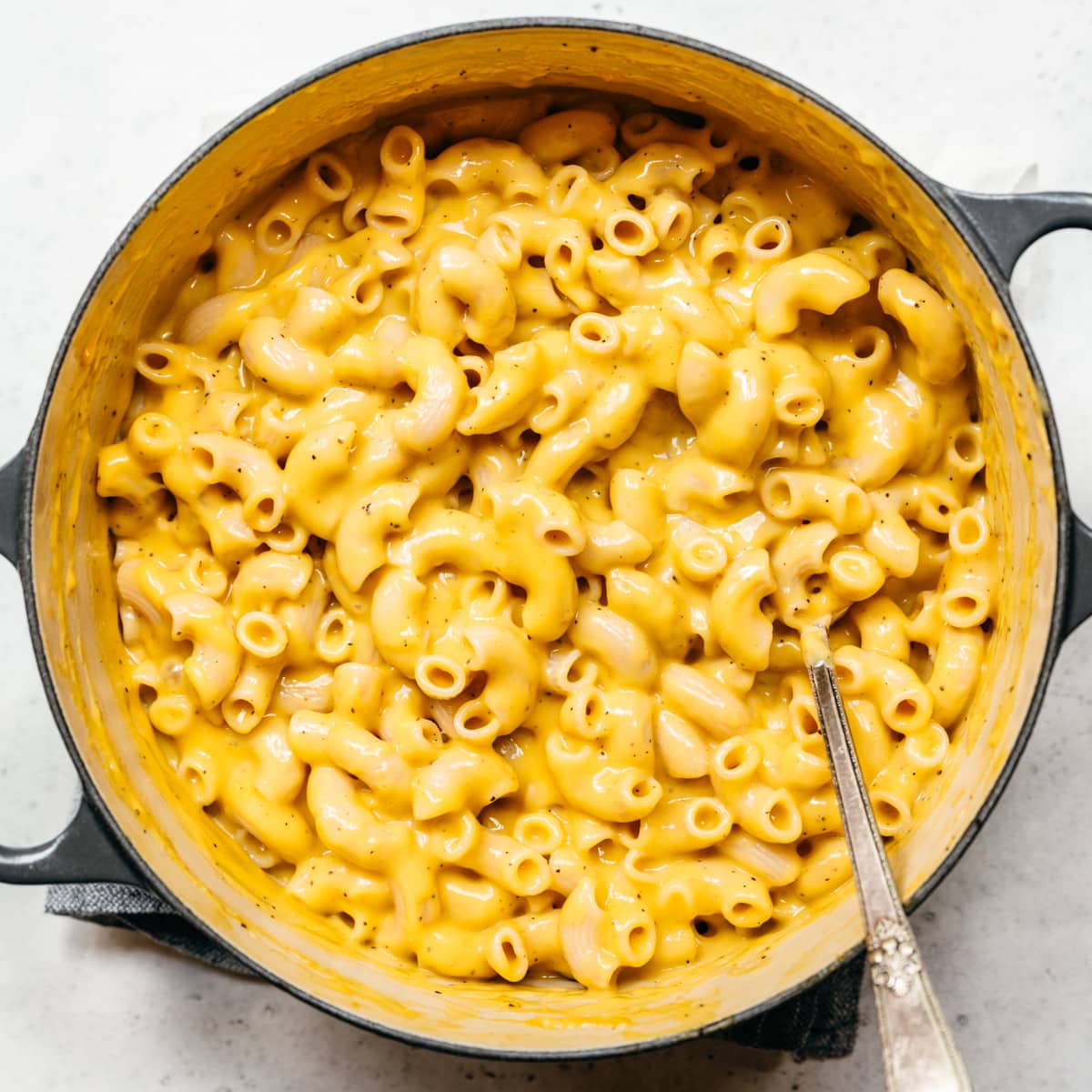Imagine a creamy, cheesy, utterly decadent mac and cheese, so rich and satisfying it rivals the classic comfort food, yet entirely plant-based. This isn’t some watery, flavorless imitation; this is a journey into the heart of vegan culinary innovation, exploring the diverse world of vegan cheeses and techniques to achieve the ultimate cheesy perfection. Prepare to be amazed by the versatility of plant-based ingredients as we unlock the secrets to crafting a vegan mac and cheese that will convert even the most ardent cheese aficionado.
We’ll delve into three distinct recipes, each showcasing a different vegan cheese – cashew, nutritional yeast, and tofu – highlighting their unique flavor profiles and textures. From mastering the perfect cheese sauce consistency to exploring exciting flavor enhancements and troubleshooting common pitfalls, this guide provides a comprehensive approach to creating a truly exceptional vegan mac and cheese experience. Learn to adapt the recipe to suit various dietary needs and preferences, and discover elegant plating techniques for a truly memorable presentation.
Troubleshooting Common Issues

Creating a vegan mac and cheese that rivals its dairy-laden counterpart requires attention to detail. Several common pitfalls can lead to a less-than-perfect result, but understanding these issues and their solutions will ensure a creamy, cheesy, and utterly delicious final product. This section will address the most frequent problems encountered, providing clear solutions to help you achieve mac and cheese mastery.
Grainy Sauce
A grainy vegan mac and cheese sauce is often the result of using a low-quality vegan cheese or not properly melting and emulsifying the cheese. The starches in some vegan cheeses can clump together if not heated gently and consistently. To prevent a grainy texture, opt for a smooth, high-quality vegan cheese that melts well. Furthermore, ensure the sauce is heated over low to medium heat, stirring frequently to prevent scorching and to promote even melting. Adding a tablespoon or two of nutritional yeast can help create a smoother, creamier texture, as it acts as a binding agent. Imagine the difference: a smooth, luxurious sauce versus a gritty, unpleasant texture – the subtle nuances of texture make all the difference.
Overly Thick Sauce
A sauce that’s too thick can be a result of using too much starch, not enough liquid, or over-reducing the sauce during cooking. If your sauce is too thick, simply whisk in a little plant-based milk (unsweetened almond milk or cashew cream work particularly well) or water, a tablespoon at a time, until you reach the desired consistency. Start with small additions and whisk continuously to prevent lumps. The ideal consistency should be thick enough to coat the pasta but not so thick that it’s heavy or gummy. Think of the perfect consistency as a rich, velvety blanket for your pasta, not a gluey paste.
Bland Flavor
A bland vegan mac and cheese is easily remedied with the addition of bold flavors. The key is layering flavors. Start with a well-seasoned cheese sauce base – don’t be shy with salt and pepper. Then, incorporate other flavorful elements like garlic powder, onion powder, smoked paprika, or even a dash of hot sauce for a kick. A pinch of nutmeg can add a surprising warmth and depth. Finally, consider adding fresh herbs like chives or parsley for a vibrant pop of freshness. Imagine the transformation: from a flat, uninteresting dish to a symphony of flavor.
Adjusting Sauce Consistency
Achieving the perfect consistency is crucial for a delightful vegan mac and cheese. If the sauce is too thick, gradually whisk in plant-based milk or water, a tablespoon at a time, until you reach your desired consistency. Conversely, if the sauce is too thin, gently simmer it, stirring frequently, until it thickens to your liking. You can also add a cornstarch slurry (1 tablespoon cornstarch mixed with 2 tablespoons cold water) to thicken the sauce more quickly. Remember to stir constantly to prevent lumps. The goal is a luxuriously creamy sauce that clings beautifully to the pasta.
Troubleshooting Guide
A successful vegan mac and cheese relies on careful attention to detail. Here’s a quick guide to address some common issues:
- Separating Cheese Sauce: This often happens when the sauce is not heated gently enough or stirred continuously. Start over with low heat and consistent stirring.
- Pasta Sticking Together: Ensure the pasta is well-coated with the sauce immediately after draining. Toss gently to prevent clumping. Adding a little plant-based oil to the pasta before adding the sauce can also help.
- Achieving the Right Level of Creaminess: Use a high-quality vegan cheese that melts well. Consider adding a tablespoon of vegan butter or a creamy plant-based milk for extra richness. Nutritional yeast can also enhance creaminess.
With a spectrum of flavors and textures at your fingertips, the possibilities for crafting your perfect vegan mac and cheese are limitless. Whether you opt for the nutty richness of cashew cheese, the savory depth of nutritional yeast, or the subtly creamy texture of tofu, this culinary adventure guarantees a delicious and satisfying result. Mastering the techniques detailed within, you’ll not only create a dish that delights the palate but also impress your friends and family with your vegan culinary prowess. So, embrace the challenge, experiment with flavors, and get ready to redefine your perception of vegan comfort food.
Helpful Answers
Can I make this ahead of time?
Yes! The mac and cheese can be made ahead and reheated. Store it in an airtight container in the refrigerator for up to 3 days.
What if my sauce is too thick?
Add a splash of plant-based milk or water, stirring constantly until you reach your desired consistency.
What are some gluten-free pasta options?
Brown rice pasta, quinoa pasta, or gluten-free elbow macaroni work well.
Can I freeze this?
Yes, you can freeze the cooked mac and cheese for up to 2 months. Thaw overnight in the refrigerator before reheating.


